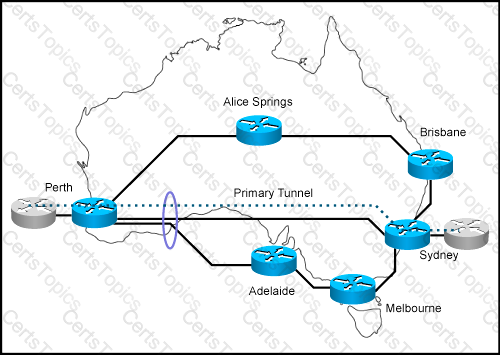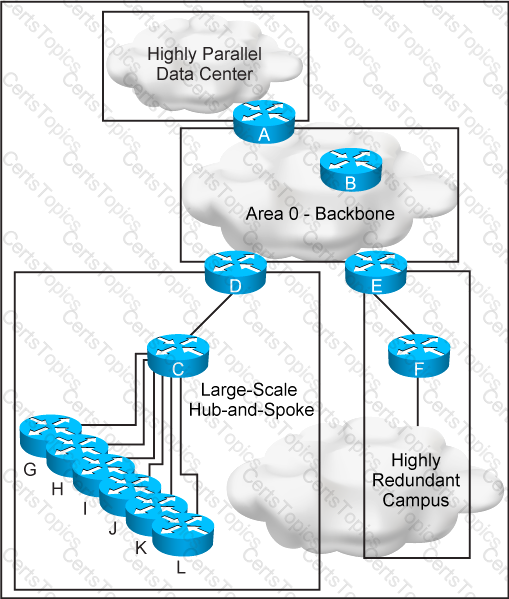Cisco Related Exams
352-011 Exam







Your client is considering acquiring a new IPv6 address block so that all Ethernet interfaces on the network receive addresses based on their burned-in hardware addresses, with support for 600 VLANs. Which action do you recommend?
Refer to the exhibit.

You are designing MPLS-TE for this network. The links form Perth to Sydney and from Perth to Adelaide share the same optical fiber in one given segment. Which feature should you implement to eliminate the risk that a backup tunnel is installed over the same optical fiber as the primary one?
Refer to the exhibit.

This new OSPF network has four areas, but the hub-and-spoke area experiences frequent flapping. In order to fix this design failure, which two mechanisms can you use to isolate the data center area from the hub-and-spoke area without losing Ip connectivity? (Choose two)